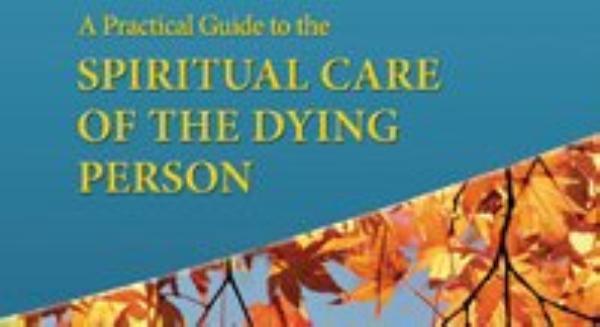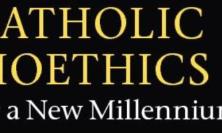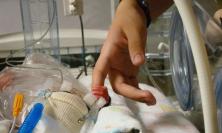A Practical Guide to the Spiritual Care of the Dying Person, published last month by the Catholic Bishops’ Conference of England and Wales, is a very helpful tool for all those engaged on the frontlines of medicine. Having worked myself as a geriatric consultant in Dutch nursing homes for many years, I can testify from my own experience that the care for the elderly, including, and perhaps especially, palliative care for the old (and the not-so-very-old, for that matter), is indeed cutting edge medicine, albeit with, and perhaps because of, a certain lack of fancy technology and high profile proof of success.
For how does one measure the success of care for the dying? One of the nurses I worked with in my first job, a very experienced and wise woman, told me, a newly appointed, inexperienced and insecure doctor who had just treated his first terminal patient and spoken to the grieving family, that one has to get it right. People die only once; you cannot make it up to them if you get the caring part wrong. Of course, as we both realised, mistakes are made, in people’s work (particularly as they work together) and also in medicine and those branches of healthcare where not every patient’s treatment involves complicated technology and endless procedure. But that was not the point she was trying to make. What she was teaching me, as I came to realise only gradually (necessarily so), is that the first steps on the final part of life’s journey are crucial ones. Whether it is the doctor giving the patient the ‘bad news’, the receptionist or nurse receiving and admitting the patient and his/her family into the hospital ward or hospice, or the chaplaincy team member coming into the room for the first time – no one will get a second chance to make a first impression. For even in this last period of a person’s life – and for most of us ‘dying’ is indeed a process that will take some time rather than just a passing moment – new relationships will be established and have to be maintained. It is up to the professional member of the caring team, whatever his/her role, to make sure that the person to be cared for is approached as just that – a human being to be cared for.
The document states this very clearly in its third section on ‘Respecting the mystery of dying’, in which the theme of relationships takes a central place: relationships with the self, with others and with the Other. The end of a human life is not just the end of the biological functioning of a body; it is also, and maybe foremost, the end of a story (or for most Christians at least, the end of a very significant part of that story). And as we all know, stories, at least the good or interesting ones, are about relationships. There could have been a good case made to present this third chapter as the first, placing the rest of the document in the context of a discussion about relationships.
The document calls itself a practical guide – one in a series – and so in order for it to be a ‘bedside tool’, available on wards to be consulted and discussed easily, it has to be relatively brief. That means that it can only mention the relevant issues and explain them to a certain degree. As is stated in the introduction, this is not, nor does it aim to be, a textbook. Textbooks are not of great help in the hectic and complicated everyday work of palliative care wards; their place is in the classroom for training and evaluation. On the ward, one needs something that summarises, helps to recall the theory and points in the right direction. More importantly, good palliative care is the work of a team, in which the members complement and support each other to give the best care possible, providing whatever the patient needs in just the right way. Books, standards and protocols certainly have their invaluable place here, but are limited as well. The document finds a good balance – both in its use of language, and in the amount and the presentation of the material – to achieve its purpose of supporting the work of a care team that includes a great variety of professional disciplines and has many different tasks to fulfil. The clear introduction is helpful as it diverts any false expectations; the box contains what the label promises, which cannot always be taken for granted when it comes to the many brochures within the field of healthcare.
Chapter one addresses many of the issues that are important in establishing a good relationship between carer and patient. A situation of approaching death can at times be as distressing for the carer as it is for most patients. It is good to have an overview and check list of the factors that, when handled properly, help to get that new relationship of trust and care off to a good start, but, when dealt with crudely, take a disproportionate amount of time and energy to correct and improve – energy which would have been better spent on focusing on the person and tasks at hand. Proper professional care demands that the uniqueness of each patient and his/her ‘case’ will be respected in such a way that each team member, and the team as a whole, makes a ‘personal patient plan’ to align the patient’s preferences with the practical possibilities of cure and care in the given circumstances.
Neither does the document shy away from those difficult but unavoidable ethical questions that are bound to come up in some form or other in every individual patient case, when the finiteness of material organic life and the in many ways praiseworthy technological achievements of modern science and medicine collide. The second chapter addresses the most frequently asked questions and answers them in a balanced way, suitable for a practical document – brief enough to provide what is necessary to deal with a problem at hand, yet inviting the reader to reflect further as the specific situation requires. Both the mentioning of the names of the contributing writers at the beginning – I hope they will be available to advise on further appropriate material – and the appendix of sources for reference at the end of the document, provide good suggestions for any member of a caring team who might want to undertake further study and reflection.
As previously stated, the document delivers what it promises and sets out to do. It is concise enough to be an effective and efficient tool to be used by staff on a ward, or maybe even professional and lay carers in home situations. Simultaneously, it is inviting enough to provoke subsequent study and discussion and offers a way into additional material. True, it is written from a Catholic background with a Catholic audience in mind, and this is where it will bear its greatest fruits. But, as the document itself states, caring for the dying is basically about human relationships and interaction. Therefore, everyone who finds him/herself in this situation (and will this not be all of us, one day, as carer, as family member or friend, and ultimately as the dying person?) should read this document and use it to his/her best advantage.
The reviewer, Bart Beckers SJ, is currently studying at Heythrop College, University of London.
![]() Download this book from the Catholic Bishops’ Conference of England and Wales web site
Download this book from the Catholic Bishops’ Conference of England and Wales web site






